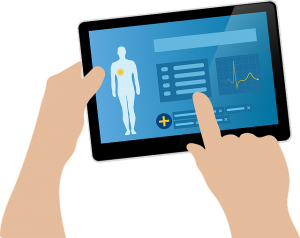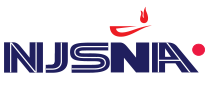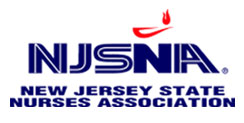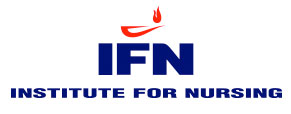Documenting Nursing Assessments in the Age of EHRs
 By: Georgia Reiner, MS, CPHRM, Senior Risk Specialist, Nurses Service Organization (NSO)
By: Georgia Reiner, MS, CPHRM, Senior Risk Specialist, Nurses Service Organization (NSO)
Nurses have grown accustomed to documenting assessment results in the electronic health record (EHR), rapidly clicking responses to assessment checklist questions. However, at times nurses complete these actions without giving enough thought to their documentation because they want to move on to their “real” work: caring for patients.
The danger of this approach is threefold. First, nurses might base their assessment on the checklist not the patient, which can lead to an incomplete assessment, especially if the nurse inadvertently clicks something as being done when it hasn’t. Second, nurses might fail to adequately document a finding if it does not match up with the available options in the checklist. Third, nurses might fail to document assessments when a patient’s condition changes or fail to document practitioner notification of the change.
All three scenarios can leave nurses open to legal action. For example, a harried nurse caring for a patient who had a total hysterectomy clicks “normal” as the result of abdominal auscultation even though she hasn’t completed this assessment and misses the absence of bowel sounds. Soon, however, the patient develops vomiting and severe abdominal pain and is diagnosed with a bowel obstruction. This nurse could be held liable for the delay in treatment.
Dangers of improper documentation
Documentation is a vital nursing responsibility. It’s important for planning patient care, communicating with providers, and demonstrating compliance with federal, state, third-party, and other regulations. But documentation issues can result in professional liability lawsuits or action against a nurse’s license.
NSO and CNA’s Nurse Professional Liability Exposure Claim Report: 4th Edition found that documentation deficiencies are contributing factors in many nurse professional liability claims, and that the average total incurred for claims involving allegations related to documentation was $238,761. The same report also noted that 9.7% of all license protection matters, which involved defending nurses during State Board of Nursing inquiries, were related to documentation. Of these, nearly half (49.6%) involved an allegation of fraudulent or falsified patient care or billing records. Failure to document treatment/care as required by regulatory agencies or facility policy comprised 28.6% of matters related to documentation, followed by documentation that didn’t accurately reflect patient care and services (12.8%), failure to properly correct documentation errors according to facility policy (5.3%), and inadequate or untimely documentation (3.8%). These matters serve as reminders of how nurses need take time ensure they are completing documentation properly.
Benefits of EHRs
Too often nurses view EHRs negatively, feeling they’re cumbersome and take nurses away from the patient. But a well-designed EHR has several benefits, including improved efficiency and quality patient care. For example:
- EHRs provide an excellent mechanism for communicating with a variety of healthcare providers in a timely fashion, thereby improving care coordination.
- EHRs can incorporate guidelines, reminders, and decision support tools that can help providers make better decisions and deliver better care.
- Electronic documentation eliminates the problem of misinterpretation of handwritten orders.
- EHRs facilitate immediate access to data by multiple people in multiple locations.
EHRs also can protect nurses against lawsuits and actions taken against their licenses. However, to gain the most benefit, nurses need to take full advantage of EHRs. For example, according to NSO and CNA’s Nurse Professional Liability Exposures: 2015 Claim Report Update, 45% of nurses who experienced a liability claim did not use the available EHR, compared with 19.2% of those without a liability claim.
Proper EHR documentation
You can take several steps to ensure you’re documenting assessments and other information correctly in the EHR.
- Follow basic documentation principles. Whether you’re documenting on paper or in an EHR, the same basic principles apply. Document promptly, accurately, and without bias. Don’t interject opinions about patients or providers. When making a correction to previously recorded information, include the reason for the change. Remember that the EHR provides a date and time for each entry, providing a clear documentation trail.
- Adhere to policies, procedures, regulations, and guidelines. In the event of a legal action, one of the first steps an attorney will take is to determine if you followed your organization’s policies and procedures related to nursing assessments and documentation, as well as any relevant state, federal, or local guidelines, and guidelines from professional associations.
- Copy and paste cautiously. The copy and paste feature in EHRs can be a time saver, but errors, including errors of omission, can easily occur. For example, you copy your note for one patient with a myocardial infarction (MI) into another MI patient’s record but forget to add that you notified the provider of the new S4 you heard on auscultation. If the patient later experiences severe heart failure, you will have no evidence that you notified the provider. Another problem with copy and paste is that errors can rapidly spread as others pick up the same erroneous information. For instance, a nurse copies an assessment for a patient with pneumonia several times, forgetting to update the temperature, which has returned the normal. The patient’s physician reads the note, thinks the patient isn’t responding to treatment, and changes the antibiotic. Subsequently, the patient experiences a significant adverse event from the new antibiotic, which leads to legal action against the hospital, the physician, and the nurse.
A report from the Partnership for Health IT Patient Safety recommends providers “act with volition,” thinking about what is appropriate for copying and pasting and reviewing notes carefully. Ideally, the EHR should have a mechanism for easy identification of material that has been copied and pasted (for example, a different color text), so that providers are reminded to carefully review.
- Beware of autofill and templates. Like copy and paste, the autofill feature can save time by avoiding repetitive entries, but you need to verify that the information automatically filled in is correct. Similarly, templates for regularly occurring events such as the first postoperative visit after a total knee arthroplasty can help save time and ensure needed information is collected, but you still need to be aware of individual patient needs and assessment findings.
- Use notes appropriately. Sometimes what you need to document as an assessment finding isn’t in a checklist or pull-down menu. Don’t choose the “next best” option; doing so can lead to miscommunication and clinical and billing errors. For example, if you select “pressure injury” because “skin tear” isn’t available, legal action would be based on the more serious injury. A better approach is to add a note to the patient’s record. Be sure your note provides vital information in a succinct matter to avoid “note bloat” (also a side effect of inappropriate copy and paste). If an option that you would use frequently isn’t available, talk with your manager or informatics contact about adding it to the EHR.
- Protect patient privacy. Do not share your passwords and change them regularly, according to your facility’s policy. In addition, don’t enter information in view of other patients.
- Don’t ignore alerts. Alerts are there to help you make better decisions when it comes to patient care. For example, when you enter your assessment data, you may receive an alert that a patient could be at risk for sepsis. Your prompt action could save the patient’s life. On the other hand, too many alerts may lessen their efficacy, leading to “alert fatigue”. Talk with your manager or informatics contact to discuss settings.
- Complete an effective assessment. You won’t have the information you need for the EHR unless you perform a quality assessment. Don’t simply consider what a computer checklist tells you to include. Use your critical thinking skills to match the assessment to the patient.
- Document changes in the patient’s condition. Remember to enter changes to the patient’s status into the computer and include if you notified the provider of the change.
A partnership
Rather than having an adversarial relationship with the EHR, nurses should consider the EHR as a care partner. By serving as a repository of data, providing alerts as needed, and facilitating communication, the EHR can help ensure quality patient care—and reduce nurses’ risk of legal action.
|
Effective use of EHRs |
| These actions will help you gain the most benefit from the EHR:
Document promptly and thoroughly. This not only helps protect you from liability but, more importantly, ensures that information is quickly available to other providers. Document accurately. Don’t omit key information and don’t try to cover up if you failed to document or take correct action. Get involved in EHR selection. Often, nurses don’t use the EHR correctly or take full advantage of its capabilities because the design is poor. Ask to be included on committees tasked with selecting the EHR vendor. Consider which systems best reflect what providers need to document and assess for user interface by checking items such as the font size of screen text. Identify opportunities for improvements in EHR function. Instead of engaging in potentially dangerous workarounds, notify leadership where improvements are needed. In some cases, the format of the EHR can be tweaked to make it easier for the user. Don’t assume the EHR is always right. The EHR isn’t infallible. If, for example, results of a test don’t seem to match the patient’s symptoms, follow up with the provider – the test may need to be redone. Provide education. Consider helping your colleagues learn more about proper documentation in the EHR by providing an education program or suggesting such a program to your professional development department. Be patient centered. The ability to document at the patient’s bedside can save time and improve accuracy, but only if you keep your focus on the patient instead of on the computer. Maintain eye contact and consider telling patients what you are entering into the computer, which can help ensure the information is accurate. |
| RESOURCES
Balestra ML. Electronic health records: Patient care and ethical and legal implications for nurse practitioners. J Nurs Pract. 2017;13(2):105-111. CNA, NSO. Nurse Professional Liability Exposure Claim Report: 4th Edition. 2020. www.nso.com/Learning/Artifacts/Claim-Reports/Nurse-Practitioner-Claim-Report-4th-Edition-A-Guide-to-Identifying-and-Addressing-Professional-Liability-Exposures CNA, NSO. Nurse Professional Liability Exposures: 2015 Claim Report Update. 2015. www.cna.com/web/wcm/connect/e05b5d91-cf38-444d-8727-ab65f25f8f6a/RC_Health_Nurses_Claim_Report_Update_101615.pdf?MOD=AJPERES&CACHEID=e05b5d91-cf38-444d-8727-ab65f25f8f6a ECRI Institute. Copy/Paste: Prevalence, Problems, and Best Practices. Special Report. 2015. www.ecri.org/Resources/HIT/CP_Toolkit/CopyPaste_Literature_final.pdf. Kelley T. Electronic Health Records for Quality Nursing and Health Care. Lancaster, PA: DEStech Publications; 2016. Pagulayan J, Eltair S, Faber K. Nurse documentation and the electronic health record. Am Nurs Today. 2018;13(9):48-52, 54. Partnership for Health IT Patient Safety. Health IT Safe Practices: Toolkit for the Safe Use of Copy and Paste. 2016. https://d84vr99712pyz.cloudfront.net/p/pdf/hit-partnership/copy-paste-toolkit.pdf. Tsou AY, Lehmann CU, Michel J, et al. Safe practices for copy and paste in the EHR. Appl Clin Inform. 2017;8(1):12-34. Disclaimer: The information offered within this article reflects general principles only and does not constitute legal advice by Nurses Service Organization (NSO) or establish appropriate or acceptable standards of professional conduct. Readers should consult with an attorney if they have specific concerns. Neither Affinity Insurance Services, Inc. nor NSO assumes any liability for how this information is applied in practice or for the accuracy of this information. This risk management information was provided by Nurses Service Organization (NSO), the nation’s largest provider of nurses’ professional liability insurance coverage for over 550,000 nurses since 1976. The individual professional liability insurance policy administered through NSO is underwritten by American Casualty Company of Reading, Pennsylvania, a CNA company. Reproduction without permission of the publisher is prohibited. For questions, send an e-mail to service@nso.com or call 1-800-247-1500. www.nso.com. |




